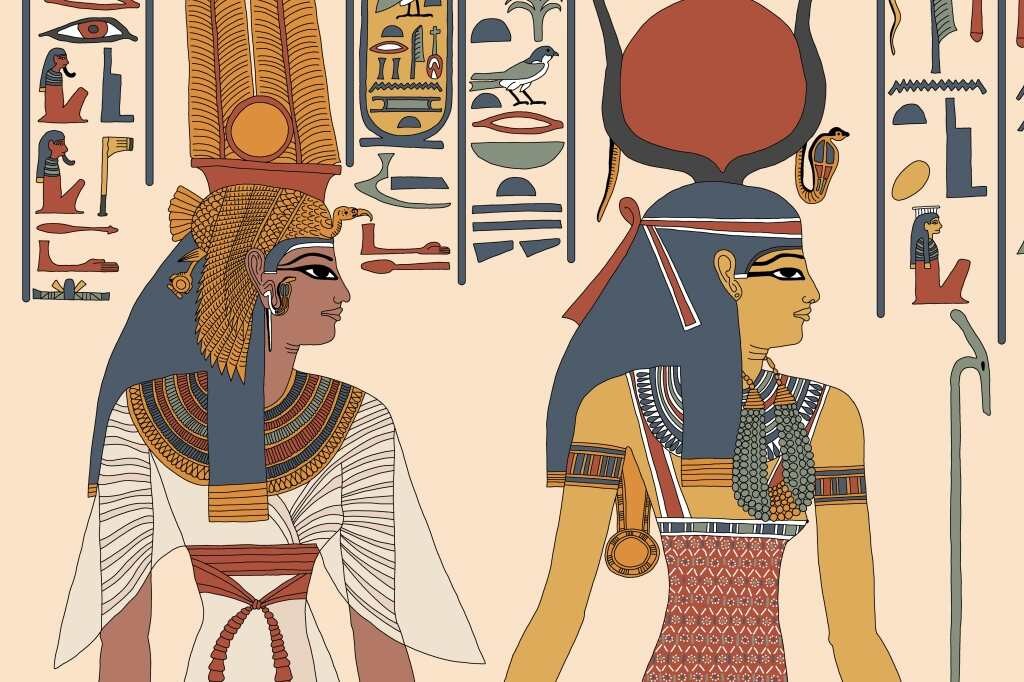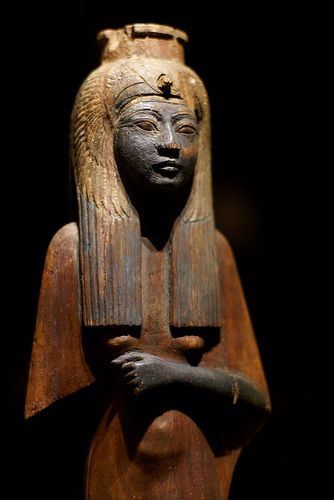Queen Nefertari Merytmut

Period: New Kingdom, 19th Dynasty | Consort of: Pharaoh Ramses II
Queen Nefertari, whose full name Nefertari Merytmut means “Beautiful Companion, Beloved of the goddess Mut,” was one of the most revered and influential queens in ancient Egyptian history.

This sculpture depicts a standard topped with a bust of the goddess Mut, wearing a striated wig adorned with a uraeus and the Double Crown of Upper and Lower Egypt. The surfaces of Mut and Queen Nefertari’s flesh are highly polished, creating a striking contrast with the matte texture of the wigs and garments. The shaft of the standard bears a hieroglyphic inscription that reads:
“The good god, the son of Amun, born of Mut in order to rule all that the sun’s disk encircles, the lord of the Two Lands, User-Maat-Ra Setep-en-Ra [Ramses II].”
The back pillar of the piece remains uninscribed, and the sculpture stands 37 inches (94 cm) high.

The figure of a standard-bearer in sculpture is a form almost exclusively associated with the New Kingdom. According to Egyptologist Franco, depictions of kings as standard-bearers are relatively common, and some private individuals were occasionally granted the honor of carrying divine standards during temple festivals dedicated to deities they particularly revered.

However, this statue of Queen Nefertari is exceptional—it appears to be the only known three-dimensional representation of a queen in the role of a standard-bearer. This unique depiction highlights the liturgical and ceremonial functions of Egypt’s “Great Royal Wives,” who, alongside the pharaoh, played active roles in religious rituals conducted in the great temples of the realm.











